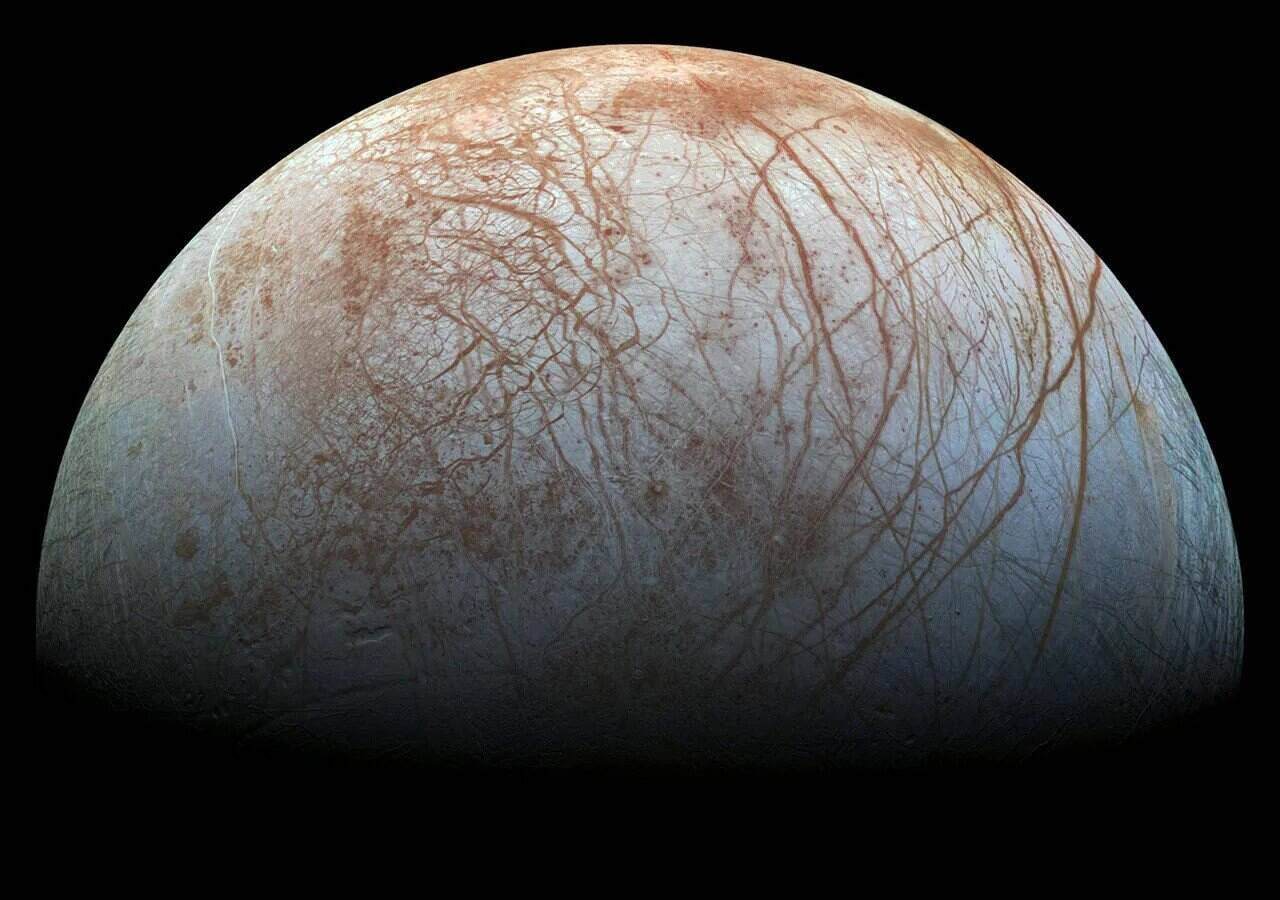In the vast expanse of our solar system, there exists a moon that has captured the imagination of scientists, astronomers, and space enthusiasts alike – Europa. Named after the ancient mythological figure, Europa, the moon is one of Jupiter’s largest satellites and has become the focus of intense scientific scrutiny in recent years. What makes Europa so intriguing? Why do scientists believe it holds the key to some of the most profound questions about the potential for life beyond Earth? In this exploration, we will delve into the mysteries of Europa, its unique characteristics, and the scientific endeavors aimed at unraveling its secrets.
A Unique World
Europa is the fourth-largest moon of Jupiter, with a diameter of approximately 3,100 kilometers – making it slightly smaller than Earth’s Moon. However, what sets Europa apart is its striking surface features. Unlike the pockmarked, cratered appearance of many moons and planets in our solar system, Europa boasts a smooth and icy surface. This surface, composed mainly of water ice, conceals a vast and mysterious ocean beneath.
The Hidden Ocean
Beneath Europa’s icy exterior lies a subsurface ocean that is estimated to be twice the volume of Earth’s oceans combined. This ocean, kept in a liquid state by the moon’s tidal interactions with Jupiter, has captivated scientists for its potential habitability. The constant flexing and stretching caused by Jupiter’s gravitational forces generate heat, preventing the ocean from freezing solid. This unique environment has sparked the curiosity of astrobiologists, who speculate that Europa’s ocean may harbor the necessary conditions for life to thrive.
The Quest for Life
The possibility of finding life beyond Earth has long been a driving force in space exploration. Europa’s subsurface ocean offers a tantalizing prospect for the existence of life, even in its simplest forms. Scientists believe that the combination of liquid water, essential chemical elements, and a stable energy source from tidal heating could create a habitable environment beneath the icy crust.
Several space missions have been designed with the primary goal of exploring Europa and searching for signs of life. The Europa Clipper mission, planned by NASA, is one such endeavor set to launch in the near future. Equipped with a suite of scientific instruments, the spacecraft aims to conduct detailed reconnaissance of Europa’s surface, study its atmosphere, and investigate the composition of its hidden ocean. The hope is that this mission will bring us one step closer to answering the age-old question: Are we alone in the universe?
Surface Features and Mysteries
While Europa’s smooth surface initially appears uneventful, closer examination reveals a network of intricate patterns, cracks, and ridges. These features suggest a dynamic, ever-changing moon with a geologically active interior. One prominent feature is the “chaos terrain” – regions where the ice appears to have broken apart and shifted, creating chaotic patterns across the surface. The exact processes that lead to the formation of these features remain a subject of intense scientific investigation.
Europa’s surface also showcases long, linear cracks known as “lineae.” These cracks can extend for hundreds of kilometers, and their formation is believed to result from the tidal forces exerted by Jupiter. The constant flexing of the moon’s icy shell creates stress, leading to the development of these distinctive features.
The Importance of Europa’s Exploration
Understanding Europa is not only crucial for unraveling the mysteries of our solar system’s history but also for advancing our knowledge of habitable environments beyond Earth. Europa’s unique combination of a subsurface ocean, tidal heating, and a potentially thin ice shell make it a prime target for astrobiological exploration. By studying Europa, scientists hope to gain insights into the fundamental conditions necessary for life and the potential for life to exist elsewhere in our galaxy.
Conclusion
Europa, with its enigmatic ocean and intriguing surface features, stands as a testament to the wonders of our solar system. The quest to explore this moon has brought together scientists, engineers, and space agencies in a collective effort to unlock the secrets hidden beneath its icy exterior. As we await the upcoming Europa Clipper mission, the anticipation and excitement surrounding the potential discoveries on this distant moon continue to grow. Europa may hold the key to one of humanity’s most profound questions – whether life exists beyond our home planet. The mysteries of Europa beckon, and the journey to unveil them promises to be a thrilling chapter in the ongoing saga of space exploration.

Leave a Reply